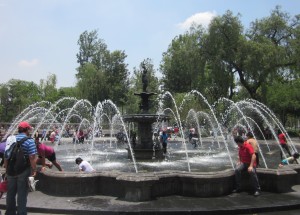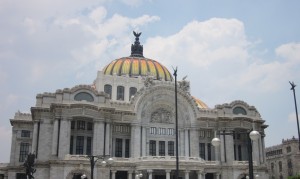Sunday morning, we’re strolling toward the Plaza del Revolucion, and we start to notice that literally every child who walks by is carrying a new toy, still in its box. A big toy store sale, perhaps? But just because there’s a sale doesn’t mean everyone will be buying something. So what’s going on here?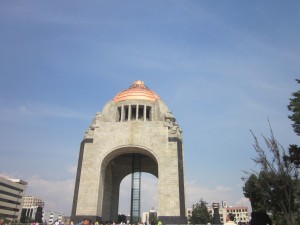
Things become clear when we reach the plaza, where some sort of children’s festival is going on, complete with toy giveaways as well as a free performance by the younger, Spanish equivalent of Justin Bieber. It was quite an amusing sight! However, we quickly moved on to our reason for visiting the plaza – enjoying the view from the monument at its center.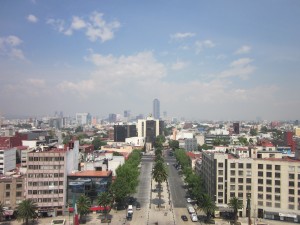 Mexico City is not as beautiful as Puebla, but it is incredibly expansive, seeming to go on infinitely in all directions.
Mexico City is not as beautiful as Puebla, but it is incredibly expansive, seeming to go on infinitely in all directions.
I personally enjoyed the basement of the monument even more than the viewing deck, as it is home to a museum that that takes you chronologically through Mexico’s revolutionary history from the early 1800s to 1920. The museum displays were entirely in Spanish, 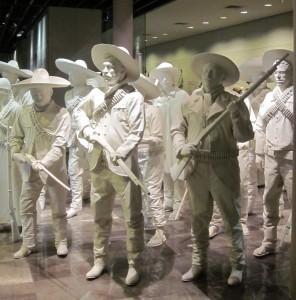 but by picking out key words and looking at pictures, we were able to piece together a reasonably accurate interpretation of the information (I checked our version against some websites later on). Like the pyramids, the museum reminded me of how rich learning can be outside the classroom. I think that field trips are most straight forward to organize for social studies teachers, as there are endless historical sites and museums that cater to their subject. However, I want to look for (and take advantage of) opportunities to teach science outside the classroom, as I feel that this makes for memorable and meaningful learning experiences.
but by picking out key words and looking at pictures, we were able to piece together a reasonably accurate interpretation of the information (I checked our version against some websites later on). Like the pyramids, the museum reminded me of how rich learning can be outside the classroom. I think that field trips are most straight forward to organize for social studies teachers, as there are endless historical sites and museums that cater to their subject. However, I want to look for (and take advantage of) opportunities to teach science outside the classroom, as I feel that this makes for memorable and meaningful learning experiences.
Our afternoon was spent aimlessly and enjoyably wandering around the city. My favourite part was quite possibly seeing the locals enjoying the fountain in the park in a way that would be a faux pas back home. Lunch was also a highlight. We decided we were brave enough to try the day’s special menu without recognizing many of the words on it, and it turned out to be delicious! I tried squash flower soup, and though at first I had to ask the waitress in my best possible Spanish whether the flowers are in fact meant to be eaten (they are), I thoroughly enjoyed it.
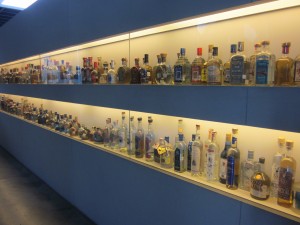 We had to visit one more museum before we bused back to Puebla – the Museum of Tequila and Mezcal. It was small but interesting, and made me realize how little I know about tequila. Like wine, its flavours and aromas can vary according to the plant species, the growing region, the age, and the fermentation process. The museum displays just a few bottles to give you an idea of the surprising diversity of this beverage.
We had to visit one more museum before we bused back to Puebla – the Museum of Tequila and Mezcal. It was small but interesting, and made me realize how little I know about tequila. Like wine, its flavours and aromas can vary according to the plant species, the growing region, the age, and the fermentation process. The museum displays just a few bottles to give you an idea of the surprising diversity of this beverage.
